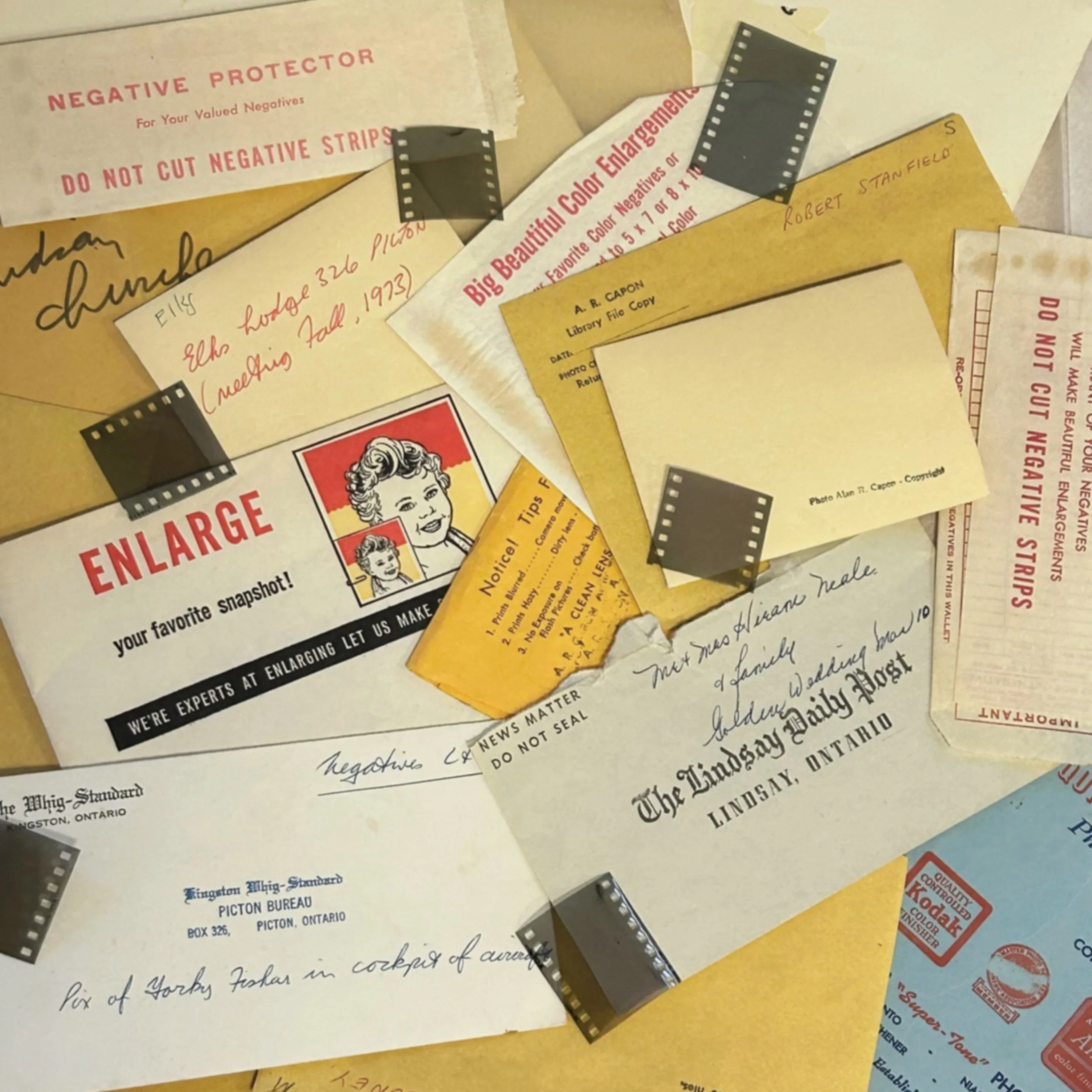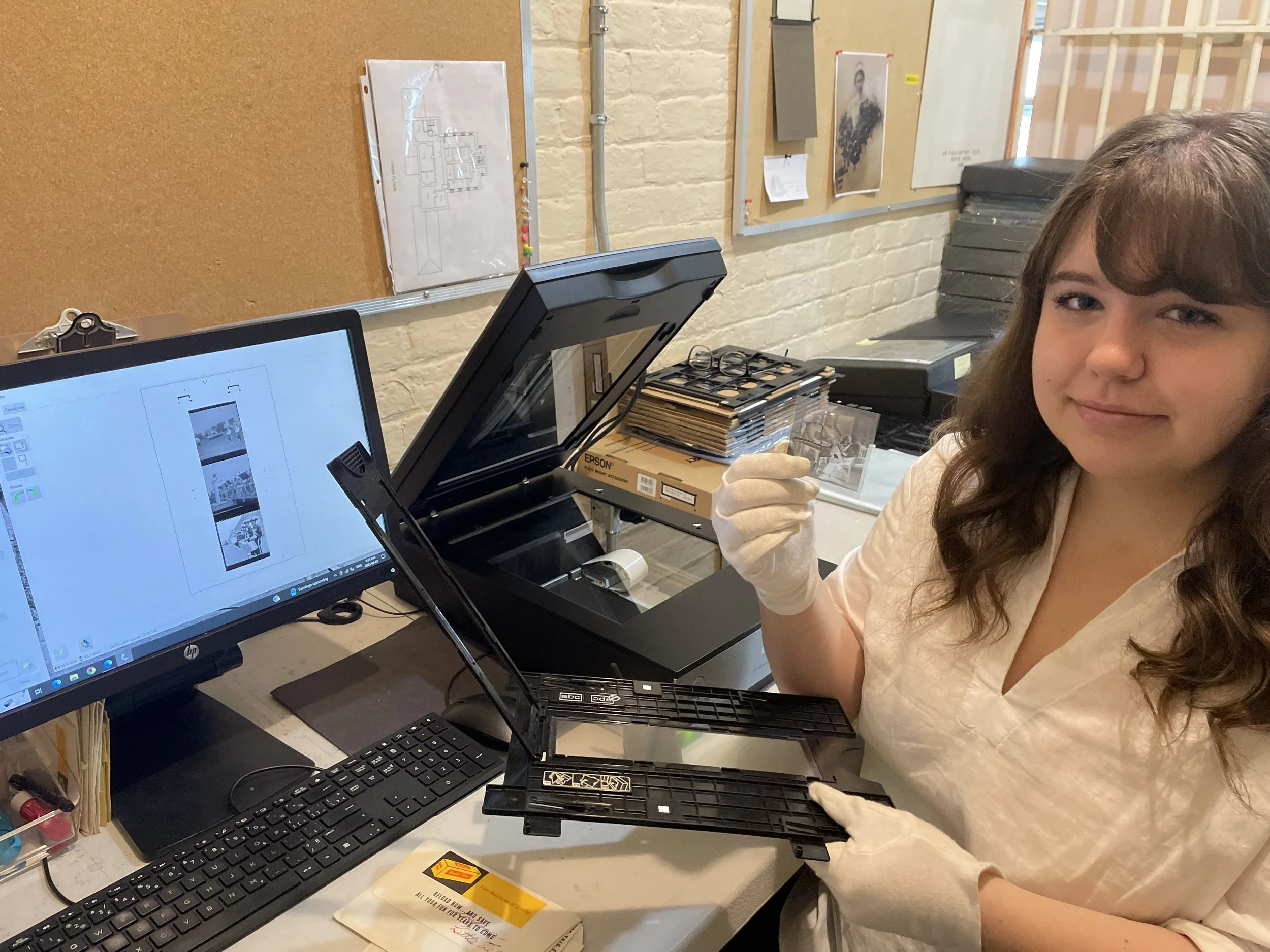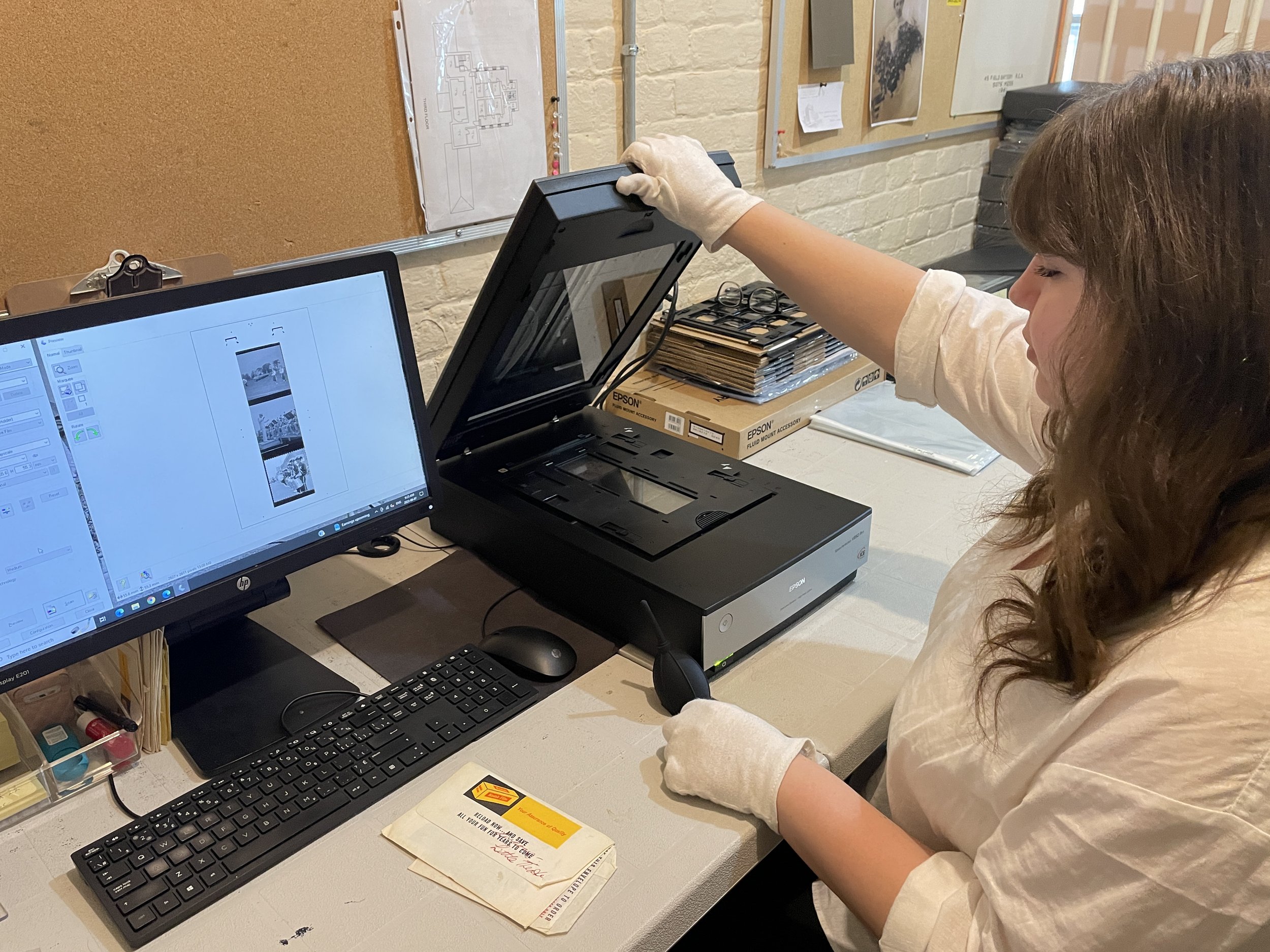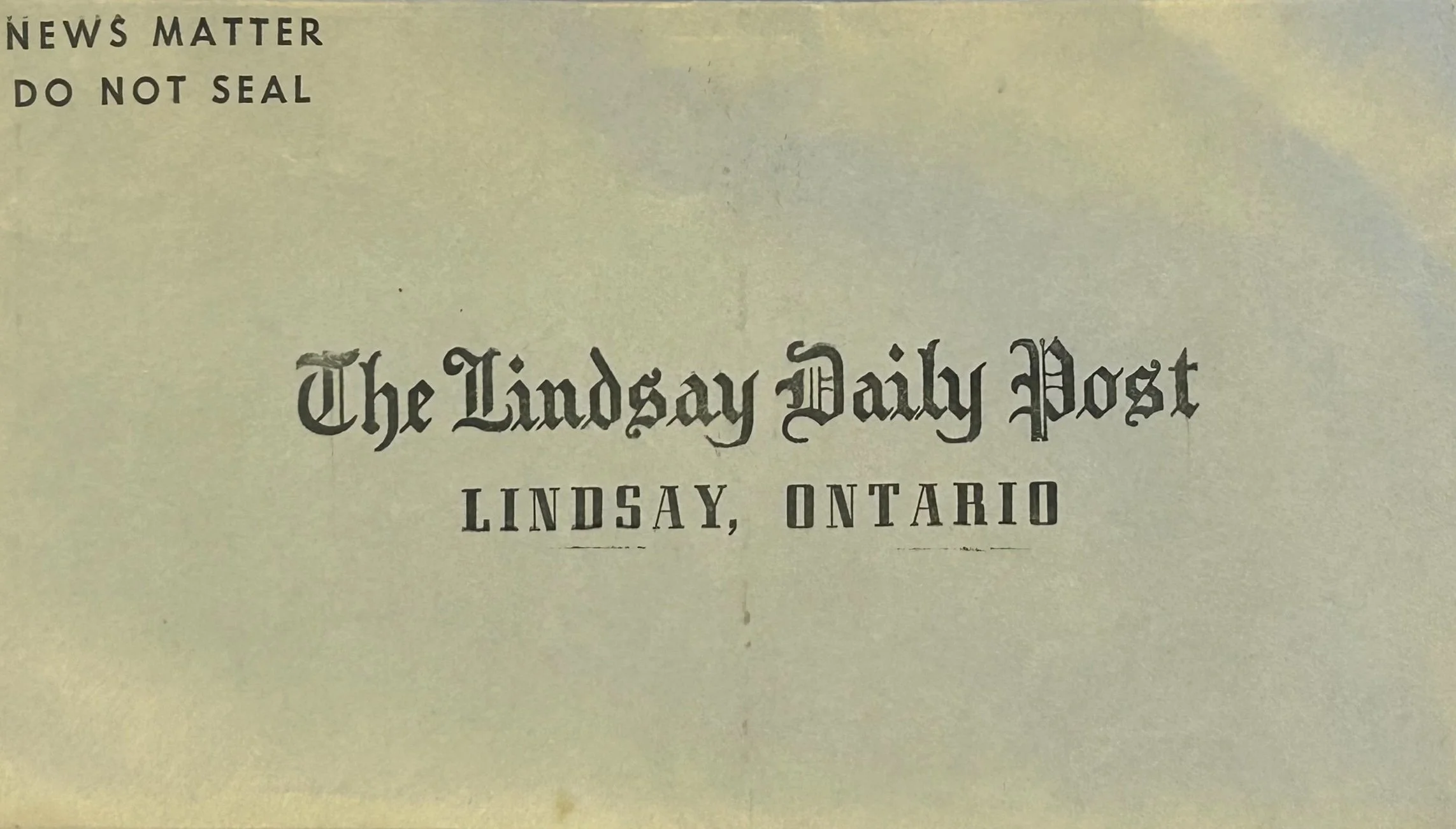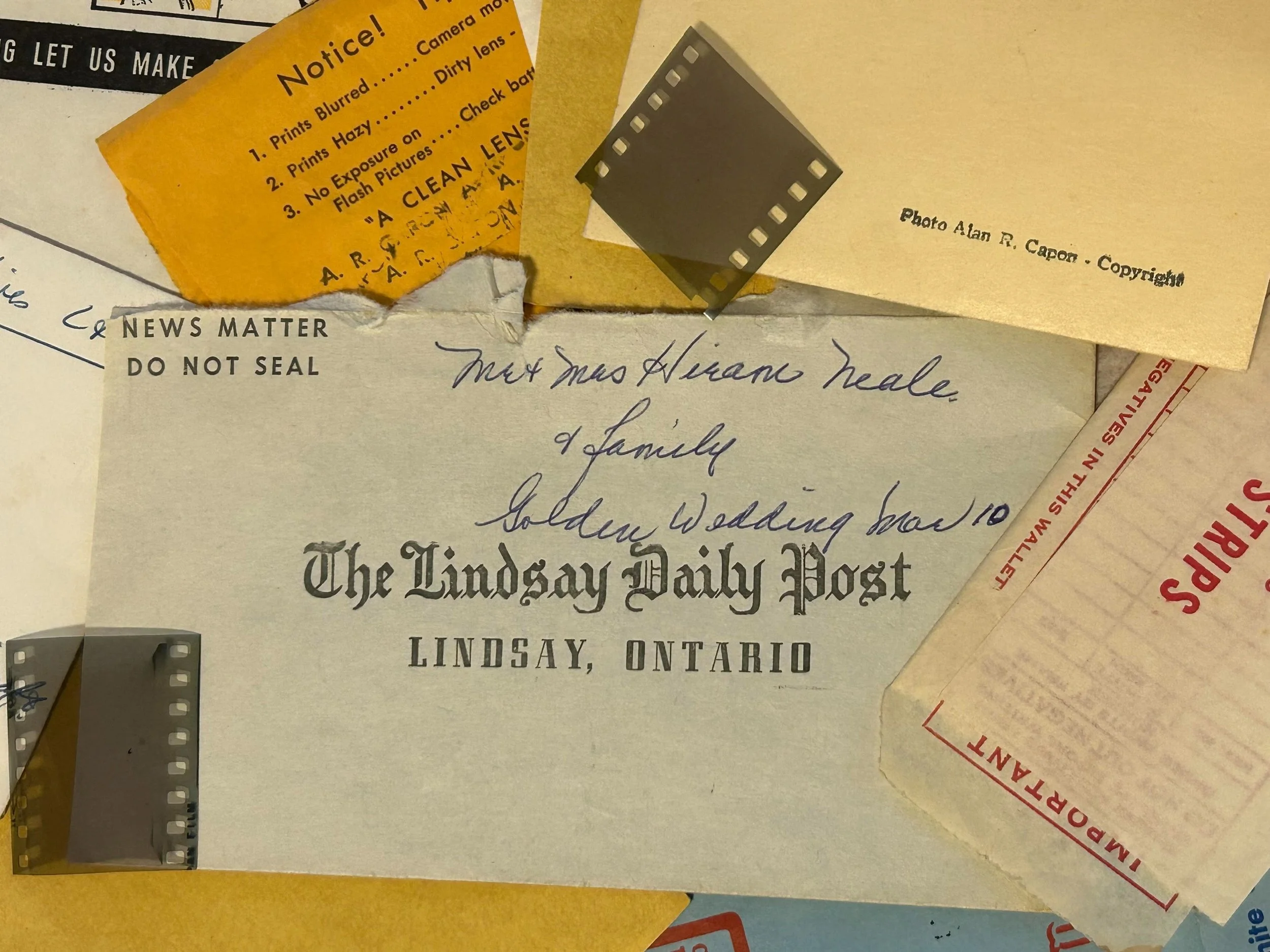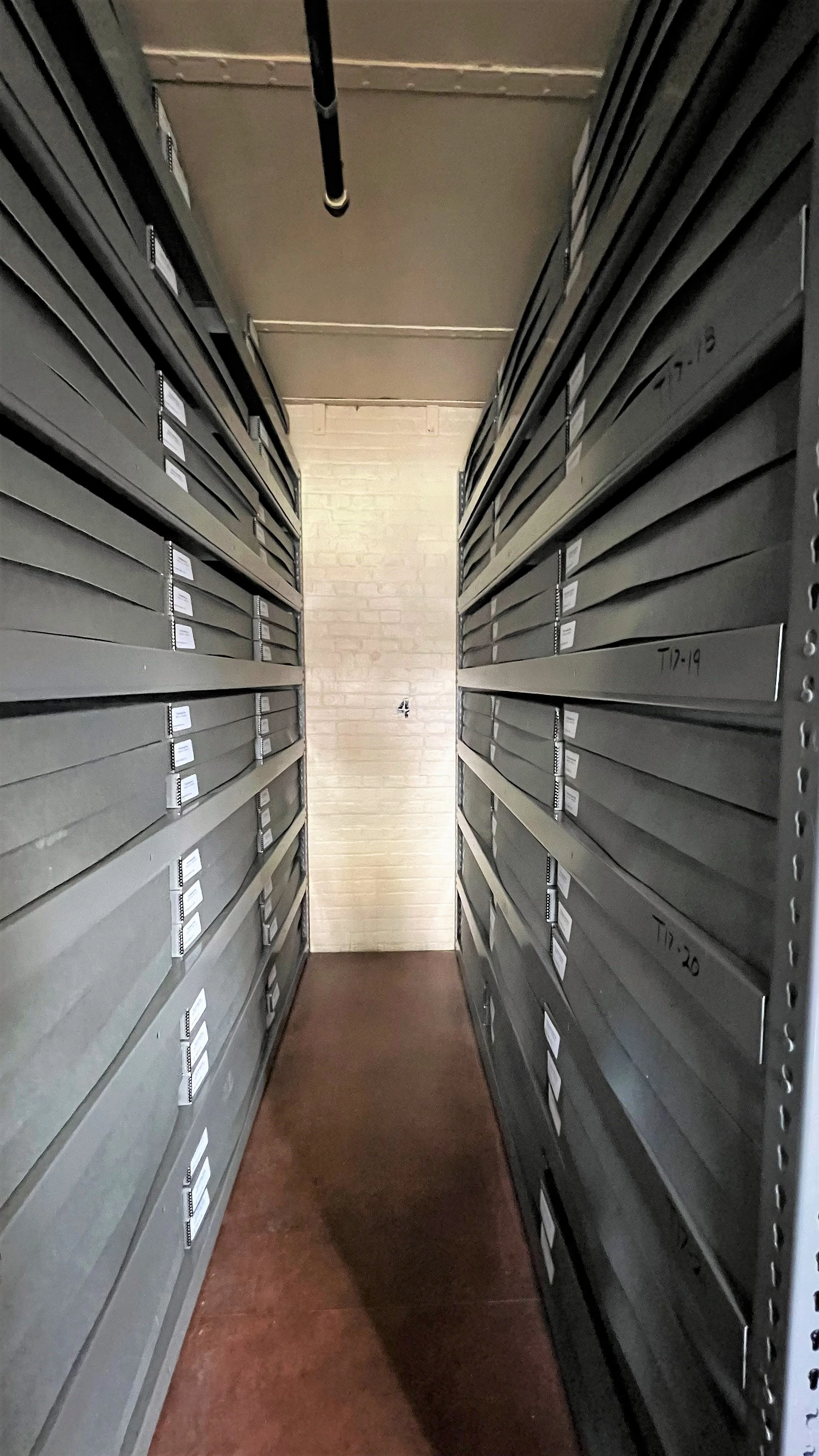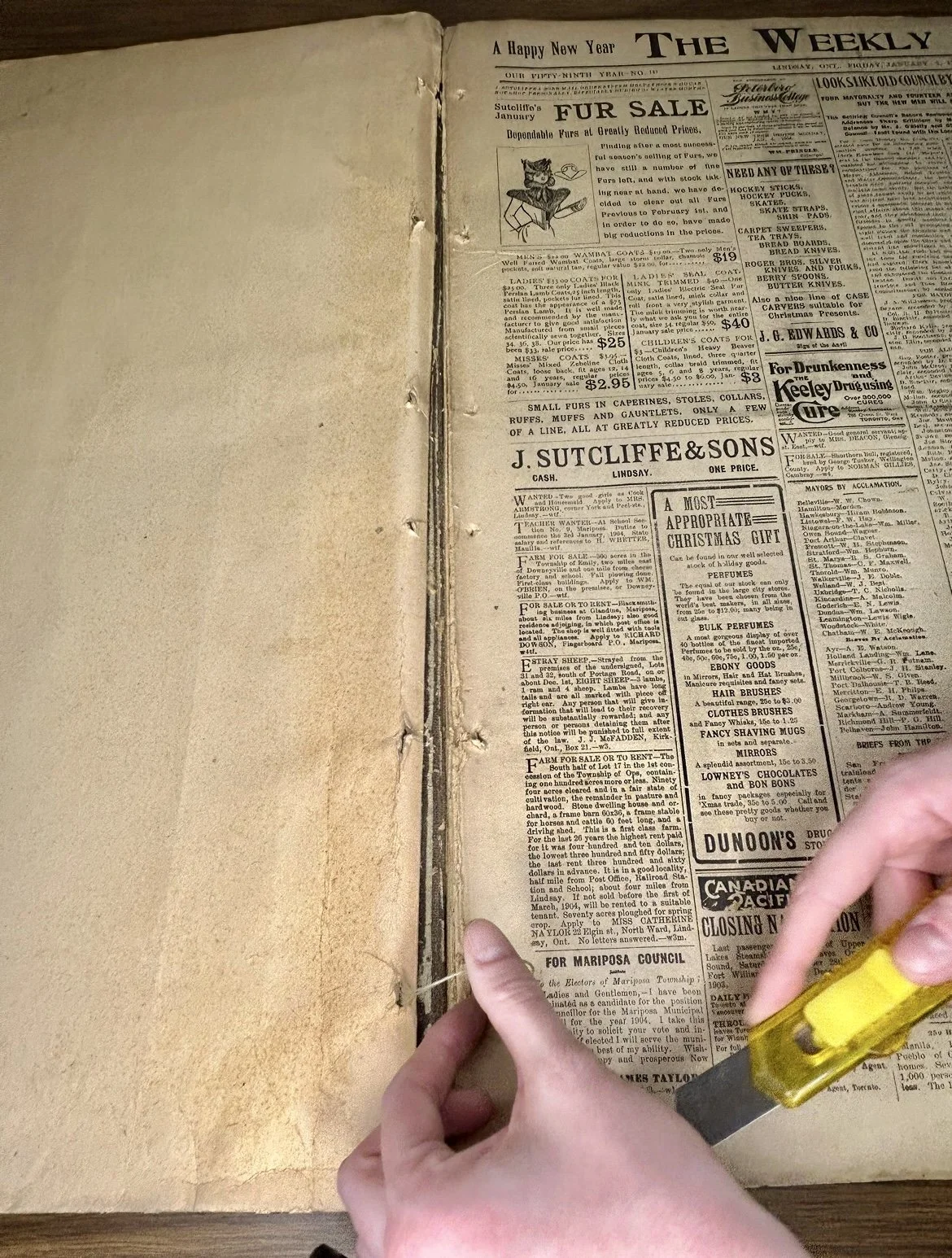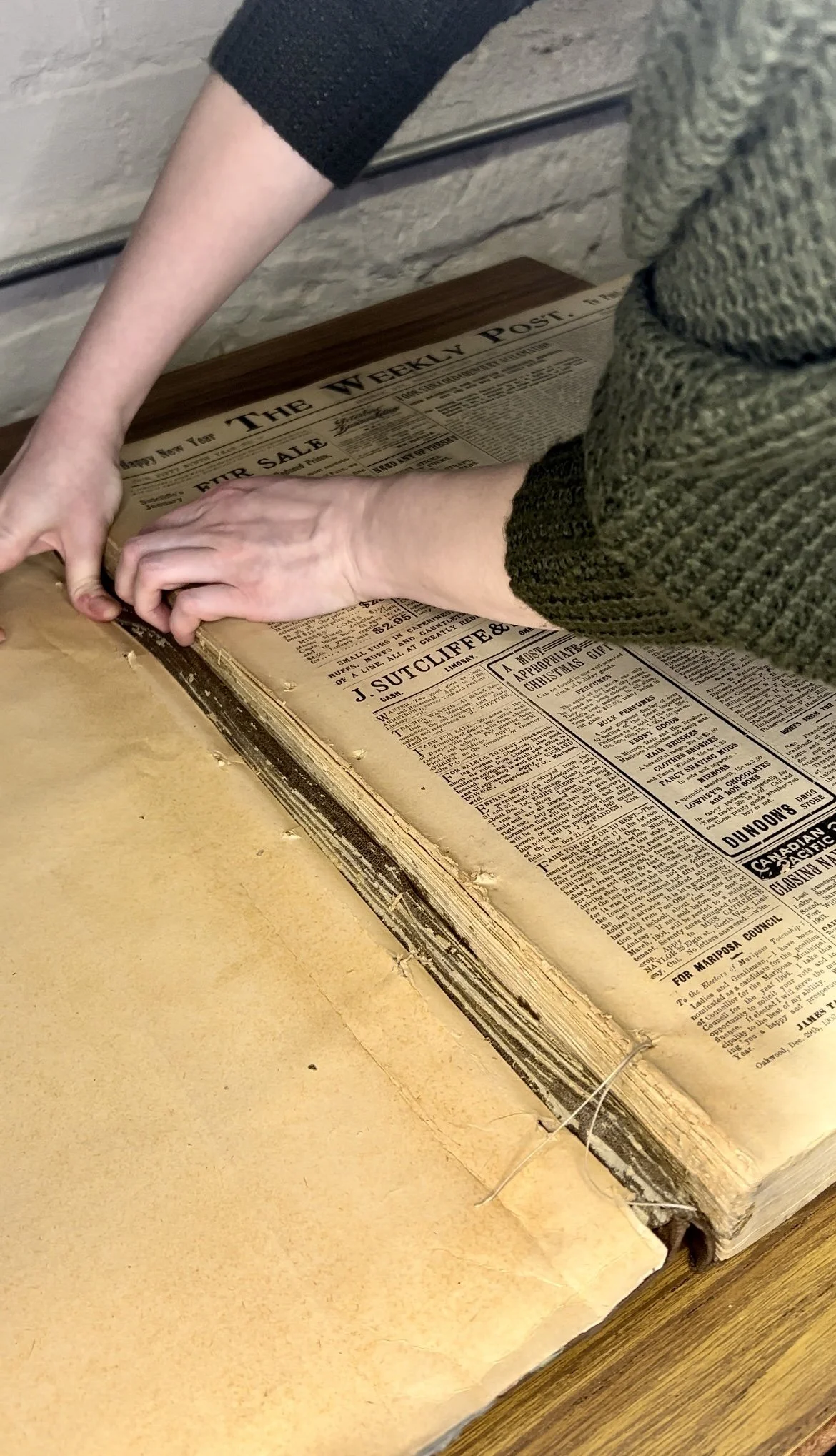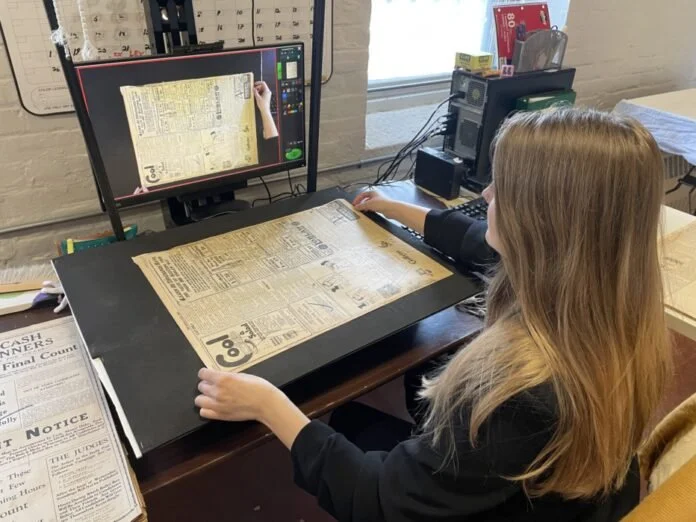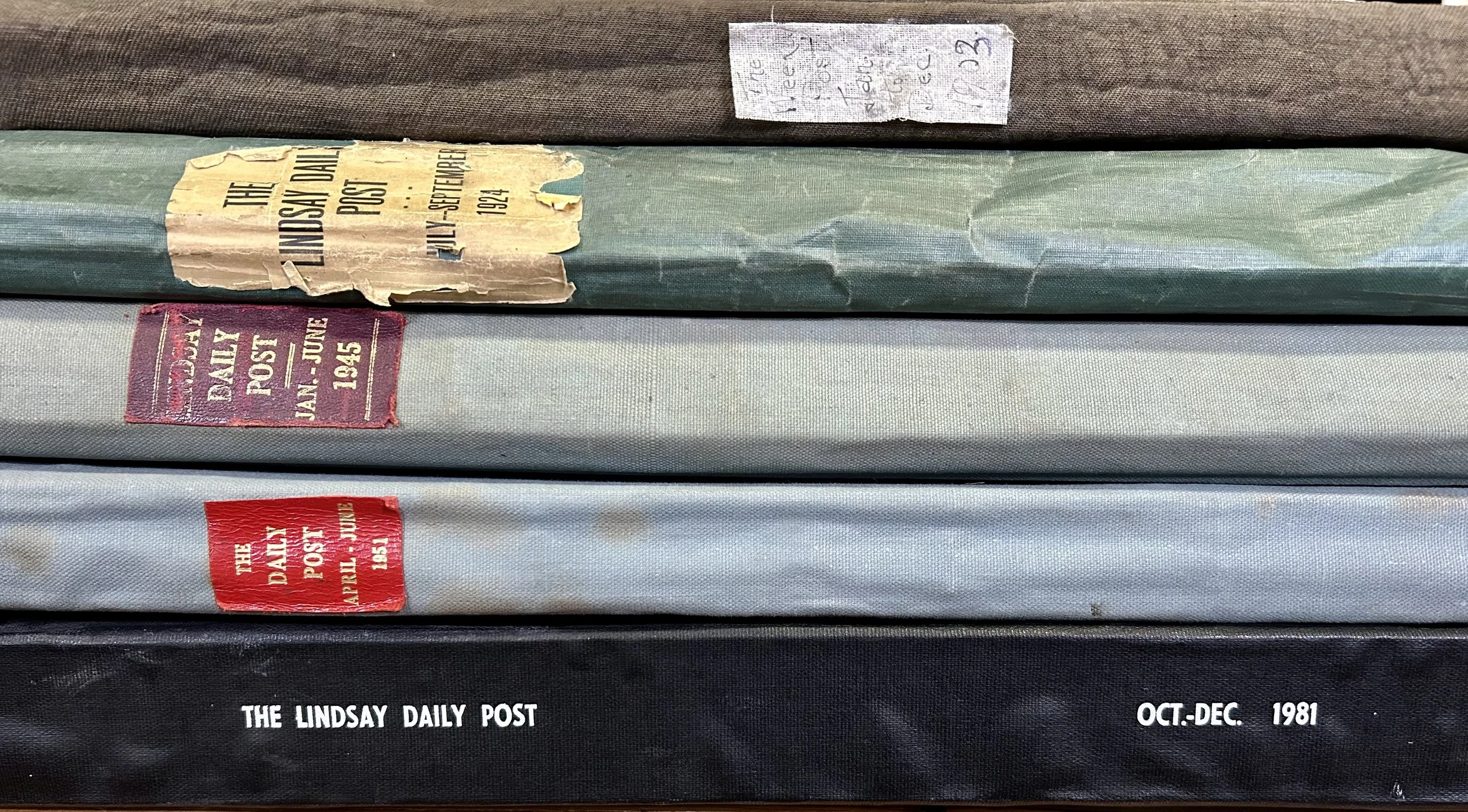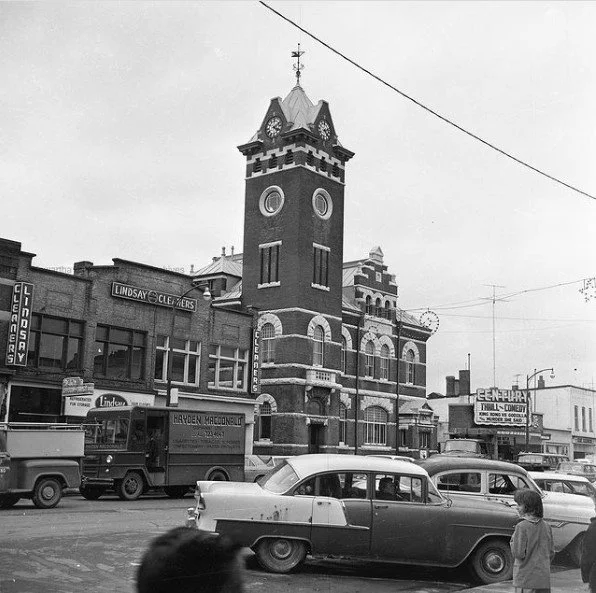Behind The Scenes
Meet the Team
Zac Miller has been with the Kawartha Lakes Museum & Archives since 2018. He has a Masters degree in Information specializing in archives from University of Toronto. He is currently our archivist.
Recognizing a significant gap in the historical documentation of the Lindsay and Kawartha Lakes region, especially concerning the period post the early 20th century, a digitization project was initiated to bridge this gap. This project was inspired by the commendable efforts of the Community Archives of Belleville and Hastings County. It aims to provide a more accessible means for individuals to explore their family history or delve into the region's past from the comfort of their homes. This initiative is particularly valuable before engaging with primary source documents located in archives across the province. Jenna and Har-Leigh have been instrumental in the success of this project, contributing significantly to its positive reception within the community. Their dedication and hard work have not only preserved important historical information.
Jenna Locke was hired as the Digital Project Lead in March 2023. She has a Masters degree in Museum and Heritage Studies, with a background in collections and archival work from museums and heritage centers in Ontario and Australia.
Digitizing such a large collection of community newspapers is important to Jenna, because it has made a massive record of historical information publicly accessible on a scale never seen before in Kawartha Lakes, and gives the public unrestricted access to the newspaper collection. These newspapers recorded many local events, such as the Academy Theatre’s renovation, Prime Minister John Diefenbaker’s visit to Lindsay, and the Centennial celebrations. But these newspapers also contained photographs taken on the front lines during World War 1, and recorded other important world events like the sinking of the Titanic, events that led up to World War 2, and the moon landing.
Har-Leigh Arsenault grew up in Kawartha Lakes and has worked for KLMA for several years in a variety of roles. She was hired as the Digital Project Assistant in March 2023, and has a Bachelors degree in Forensic Psychology. Har-Leigh has been the leading force behind the KLMA’s new social media strategy and done impressive photographic and videography work for various exhibits, social media posts, and our website.
Har-Leigh believes that this project is important because many of the moments, people and events captured in Alan Capon’s photographs aren’t necessarily ones that would be remembered or written about in history books. By digitizing and describing the negatives, and creating a long-lasting, digital file of each negative means these events and the people featured in them will be saved and viewed by people for years to come. The most rewarding part of this project is getting to document these important fragments of our history that may not have been seen before.
Photo Gallery
Social Media
PROJECT UPDATE❗️Jenna has finished all newspapers from 1916 to 1974 and they are uploaded and ready for viewing at Internet Archive.
New Year's Eve story from the 1960s brought to you by the KLMA🥂
The Lindsay Post office on Kent Street a few days before demolition began on November 1, 1963.
Stay up-to-date by following KLMA on Facebook, Instagram, or TikTok
Internet Archive
We are proud to announce that the Kawartha Lakes Museum and Archives has digitized hundreds of issues of The Lindsay Post!
This collection spans decades and is now accessible online through the Internet Archive, a digital library offering free access to a wealth of resources like newspapers, magazines, and photographs.
Internet Archive helps securely store large digital files for organizations like the KLMA, and means our newspaper collection can now be freely shared with the public.
-
Visit klmuseumarchives.ca/lindsay-post and select “Click Here for Internet Archive” to be redirected to the landing page.
-
Explore the collection at your leisure, sort through the collection by date, relevance, or title, or utilize the search bar and click "Search text contents" to find keywords.
Make sure to include quotation marks for a more precise search result, i.e. “Victoria County Historical Society”
-
When you find an issue of interest, click on it to view.
The Internet Archive offers several viewing options, including a page-by-page browser and a PDF download for offline reading.
Zoom in to catch every detail, or browse through pages to immerse yourself in the history and stories of the past.
-
Take advantage of the Internet Archive's tools to enhance your research. Utilize the sort functions an select the ‘up’ arrow to view issues chronologically.
Additionally, you can bookmark pages, use the text search feature to find specific information, and share interesting finds with friends or fellow researchers.
We invite you to delve into the pages of The Lindsay Post and discover the stories that have shaped our community. Whether from the comfort of your home or on the go, historical exploration is just a few clicks away.
Need Assistance? If you have any questions or need assistance navigating the Internet Archive, please don't hesitate to contact us. Our team is here to ensure you have a smooth and enriching experience exploring our digital collections.
FAQs
How are the newspaper books and negatives digitized?
A digitization project like this begins with researching and purchasing the necessary equipment.
Scanning newspaper books requires a large scanner due to the size of the books. Planetary scanners work best, as the camera is mounted above the scanning surface and can take photographs of a larger surface. A good DSLR camera is also needed, as the image quality is incredibly important for readers to be able to zoom in and read specific articles.
The next step is to determine the safest and most efficient way to scan each item, without causing damage to the artifact. Each newspaper book needed to be unbound in order to capture a flat-scan of each page. Newspaper books can contain 3, 6 or 12 months, making file sizes rather large. Because of this, the newspapers were scanned on a month to month basis, capturing information in smaller time increments and in smaller file sizes for the public to review or download.
The digitization of photographic negatives is a process that involves preparation, cleaning, and proper equipment. Each negative is carefully examined for physical condition. Any necessary cleaning is performed using soft, lint-free cloths, or a simple rubber air blower tool. Negatives are cleaned with care to avoid scratches or damage. Negatives are scanned using a high-resolution film scanner equipped to handle various sizes and types (e.g., 35mm, medium format). The scanner illuminates the negative from behind and captures a detailed digital image.
What will happen to the newspaper books once scanning is completed?
Once unbound, the newspaper book covers are wrapped in unbuffered, archival tissue.
After all pages have been scanned, the pages are returned to the book, wrapped in tissue, and placed inside large acid-free, archival boxes.
Each box is given a label that details the book title, date range, artifact number, and storage location within the building.
The boxes are returned to storage, where they will be kept indefinitely as the information contained within them can now be accessed digitally, therefore reducing the risk to the newspaper books.
Why digitize the newspapers and negatives?
KLMAs newspaper collection dates back to 1861. These newspapers are incredibly fragile and need to be handle as infrequently as possible if we hope to preserve them any further. The solution to this is to scan them, as it allows us to keep a digital copy of the newspapers without causing damage to the physical book.
Likewise, the photograph negatives are delicate and scanning them allows us to maintain the image captured by Alan Capon in the 1960s-70s. Many of the negatives were never used in the newspapers, or were from his own personal collection, and therefore not seen by many people.
These negatives allow us to broaden our photograph collection, which is useful for research of the area, people, businesses and events held in town.
What education or experience is needed to work in a museum or archives?
Employees of the Kawartha Lakes Museum & Archives have a wide range of educational backgrounds - from Museum Studies, and Information Sciences, Anthropology to Hospitality, Forensic Psychology, and Legal Aid.
The commonality we all share is the respect, care and dedication to the community, its history and the artifacts donated to us, and our desire to protect, preserve and educate.
How do you store the newspaper books and negatives?
Newspaper books are stored in a climate controlled area, where the room temperature and humidity are relatively stable. This prevents the pages from becoming brittle or damp, which could lead to mold growth.
After scanning is completed, the newspaper books are wrapped in unbuffered archival tissue and securely stored in large, acid-free archival boxes. Each box is given a label with the title, date range, artifact number, and storage location within the building.
To enhance accessibility and retrievability, metadata is created for each digitized negative. This metadata includes the date of the original photograph, the photographer's name, location, and any known context or subjects depicted in the image. Multiple backups of the digital files are created and stored in different locations to protect against data loss.
Once scanning is complete, the photograph negatives are stored in archival-quality negative sleeves, made from polyester, polyethylene, or polypropylene. These sleeves are designed specifically for long-term storage, offering protection from dust, fingerprints, and scratches.
As there are various sizes and types of negatives, several sleeve sizes were needed for this project. These sleeves are then stored inside acid-free archival storage boxes within a temperature controlled environment.

